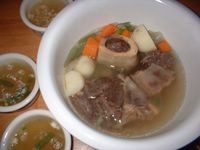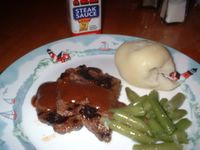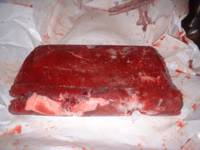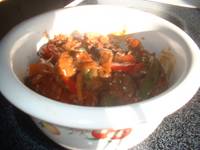I was operated before for my gallbladder stone (GB removed), and a consequent finding of my abdominal ultrasound then was the presence of a kidney stone about 1 cm in diameter. I had no histopath of the stone that was removed; we left the kidney stone alone. (My uncle-surgeon operated on me for free). I was thinking that the two stones might be related.
In formation of GB stones, there is the 4Fs mnemonic that I recall from Med school These enumerate the four F risk Factors that the patient might have to develop gallstones: Female, Fertile, Forty's and Fat. I was then 30 y.o. and certainly slim. So my RF were only that I was a female and at my reproductive age (not Fat, not Forty). I sought for other explanations, and I tried to link the two stones. I recalled that around 6 months prior to the diagnosis of my gallstone, I suffered from low-back pain that was not traceable to UTI nor lumbar problems, but which I could surmise to be secondary to my very very high levels of uric acid in my blood (hyperuricemia).
Nirarayuma na ata ako...
I could also blame my infrequent sips of water...During those days when I often forgot about my thirst, thinking, "I'll attend to the next patient first then I'll drink," plus the lack of potable water save from bottled ones that I had to buy from the store across the street (
nakakadyahe magpabili sa maintenance), I probably only was (unintentionally) able to drink about 6 cups of liquid (water, coke, coffee) per day or less...not much for a hot place on earth!
So along those lines (hyperuricemia and very little water intake, the latter contributing to concentration of urine formed, aggravated by procrastinating the bladder emptying) I deduced, without further laboratory tests, that my two stones could have resulted to the precipitation (due to low water level) of the uric acid crystals in my serum.
Of course I kept in my mind the guidelines for
low-purine diet to lower my uric acid levels, but then, I recalled having read that most of the uric acid we have in our body came from our own production, and only minimally from dietary sources (I am telling you, if you are one hypertensive hyperuremic diabetic patient, you might die of starvation if you try to stick to the dietary guidelines!)
I believe that my usual food intake does not cause the alarming levels of my uric acid. Especially that my sister and an aunt also had gallstones and had their GBs removed.
After having visited Fanatic's blog on
caffeine, uric acid and gout, I sighed a relief upon her re-affirmation of my belief that the dietary intake of purines account less significantly than my own body's production. And what is more comforting is the reassurance that I can continue to enjoy my coffee and may even increase its intake without subjecting myself to the "dangers" of forming uric acid crystals; on the other hand, it promotes excretion . Still, I have to develop the habit of drinking more water (at least 2 gallons a day!) for this purpose.
I remember after my operation while I was on duty, I was with a nurse who also had a prior Cholecystectomy (his was more complicated and he had multiple stones), and he told me that, "Pano yan, doktora, eh di tataba ka na rin? Di ba pati ate mo ganyan din. Tamo ang taba nya ngayon...tapos ako rin, tumaba."
Haha...I questioned his line of reasoning for that. To me, my lack of GB would mean that my bile (which helps in the digestion of fatty foods by emulsifying them so that digestive enzymes could find more surfaces to act upon) would come in steady stream to my small intestine, in contrast to the more controlled release by the gallbladder which contracts and releases bile in response to fat intake (hence those with stones usually feel painful spasms after eating deep-fried foods). So, if there is no fatty food, the bile has nothing to act on. If there is a high fatty intake, the bile will not increase accordingly, hence I will digest the fat less efficiently. More undissolved fat will pass through my intestines and will produce a diarrheal effect (oops, excuse me!). And since less fat is digested, less fatty acids (products of fat digestion) will reach my blood. Less fatty acids will be used to build up my fat reserves.
But I am getting thicker now especially that it is winter...You know why? I am eating way above my carbohydrate and protein requirement...I really badly need to move more and lessen my boredom...

 After browning tip steaks, remove and set aside. Heat 1 tbsp of oil on med-high. Sautee 1 medium sliced onion and 1 tbsp capers. This is a jar of capers. I just saw a recipe in one magazine using this. I had no idea before what it was. Luckily, my husband, who did not know about it either, found it. It has a different spicy, not hot, taste.
After browning tip steaks, remove and set aside. Heat 1 tbsp of oil on med-high. Sautee 1 medium sliced onion and 1 tbsp capers. This is a jar of capers. I just saw a recipe in one magazine using this. I had no idea before what it was. Luckily, my husband, who did not know about it either, found it. It has a different spicy, not hot, taste.







